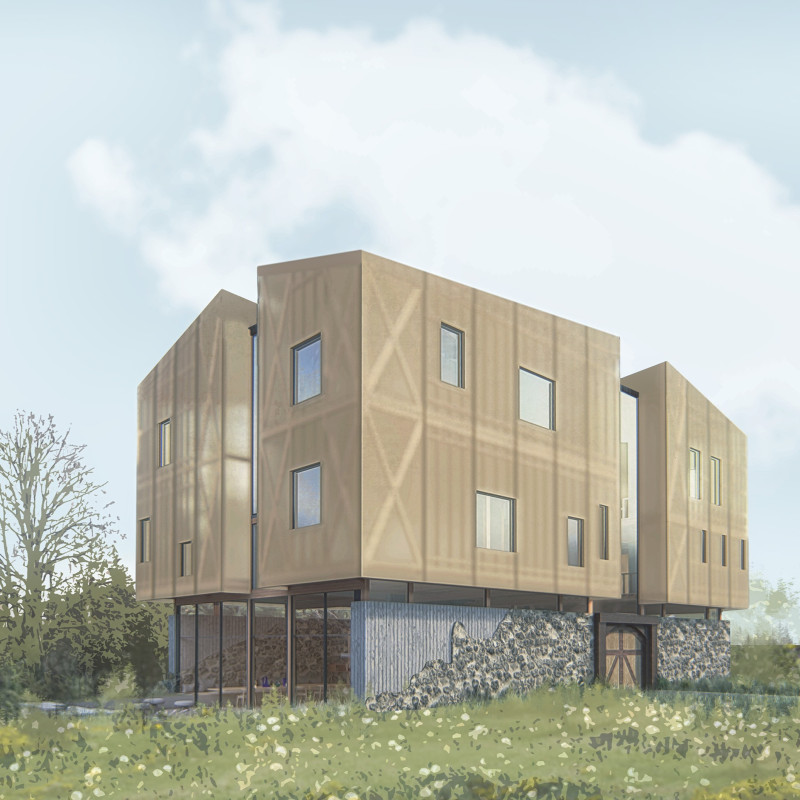5 key facts about this project
Teamakers Guest House is located in Ozolini, Latvia, surrounded by the tranquil waters of Lake Bezdibene and expansive forests. It serves as a retreat for those looking to escape the busyness of city life. The design focuses on creating a close relationship with the natural landscape, offering spaces for relaxation and social connection.
Spatial Organization
The layout promotes a thoughtful balance between shared and private areas. When guests enter, they find themselves in a living space framed by the original stone walls of a barn. This open area includes a kitchen, living room, and dining spaces, allowing guests to interact comfortably. Large windows are positioned to let in ample natural light, creating a warm and welcoming environment for all.
Connectivity with Nature
The northern part of the building features a garden designed for relaxation and outdoor gatherings. Concrete seating provides a comfortable spot for guests to enjoy the surrounding scenery. Glass panels can be opened during the warmer months, enhancing the feeling of integration between indoor and outdoor spaces. This encourages guests to engage with nature regularly, reinforcing the retreat's purpose.
Material and Aesthetic Elements
Materials used throughout the guest house play an essential role in its overall atmosphere. The existing stone walls contribute structure and visual interest, bridging the past with the present. Inside, wooden finishes are employed to bring warmth and a sense of calm. The workshop area uses polycarbonate panels that allow diffused light to enter while ensuring privacy, adding practicality to the design.
Private and Functional Spaces
Bedrooms are positioned on the south side of the house, providing quiet retreats for guests who seek solitude. These rooms connect to shared bathrooms, maintaining a sense of community without sacrificing personal space. In contrast, the northern section houses functional areas such as a tea workshop and drying chamber. This layout reflects the dual nature of the guest house, offering spaces for socializing and personal reflection.
Light filters softly through the wooden beams, casting patterns on the walls and floors. This interplay of light and shadow creates an inviting atmosphere, enhancing the overall experience of those who visit the guest house.





















































